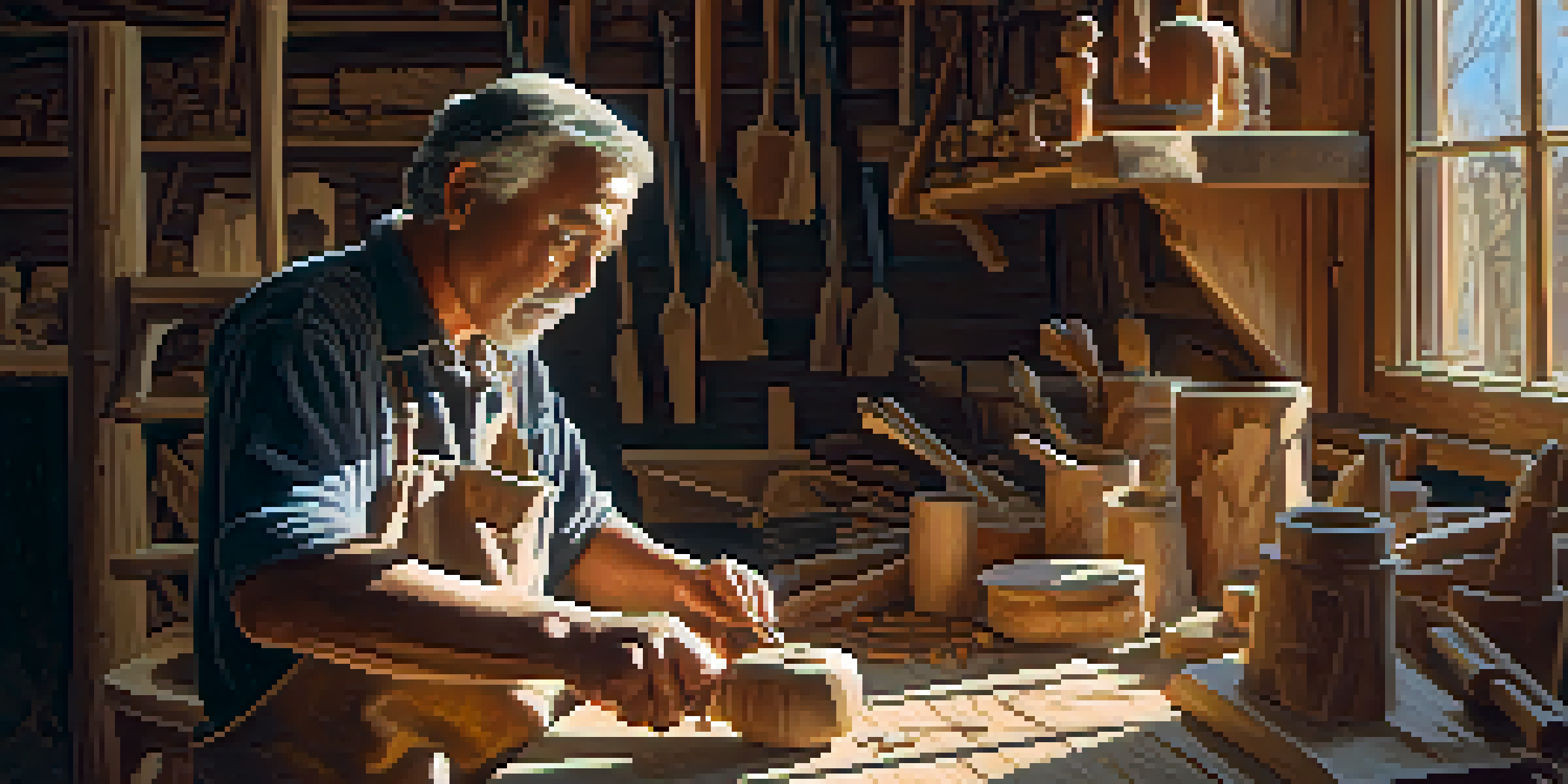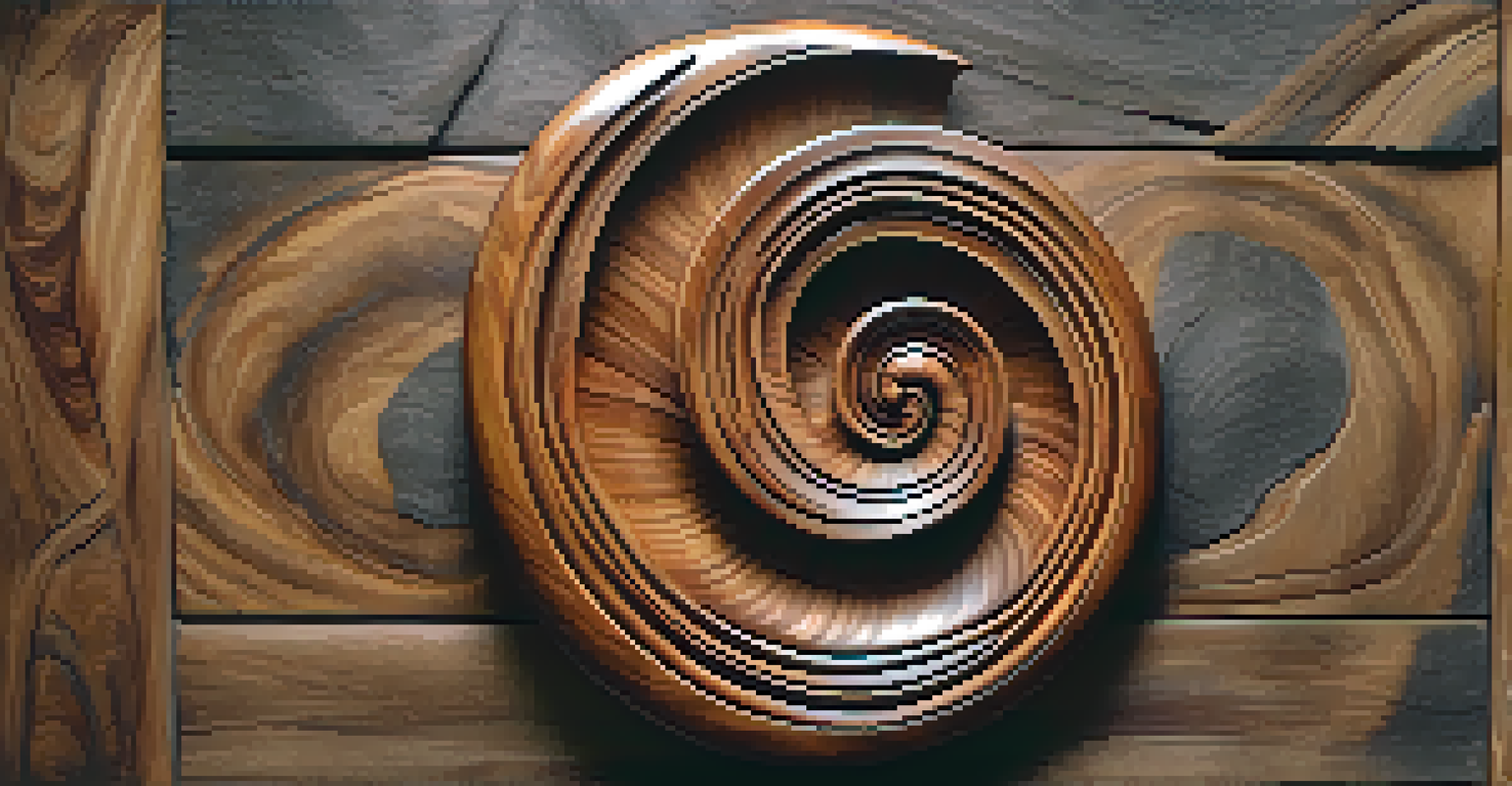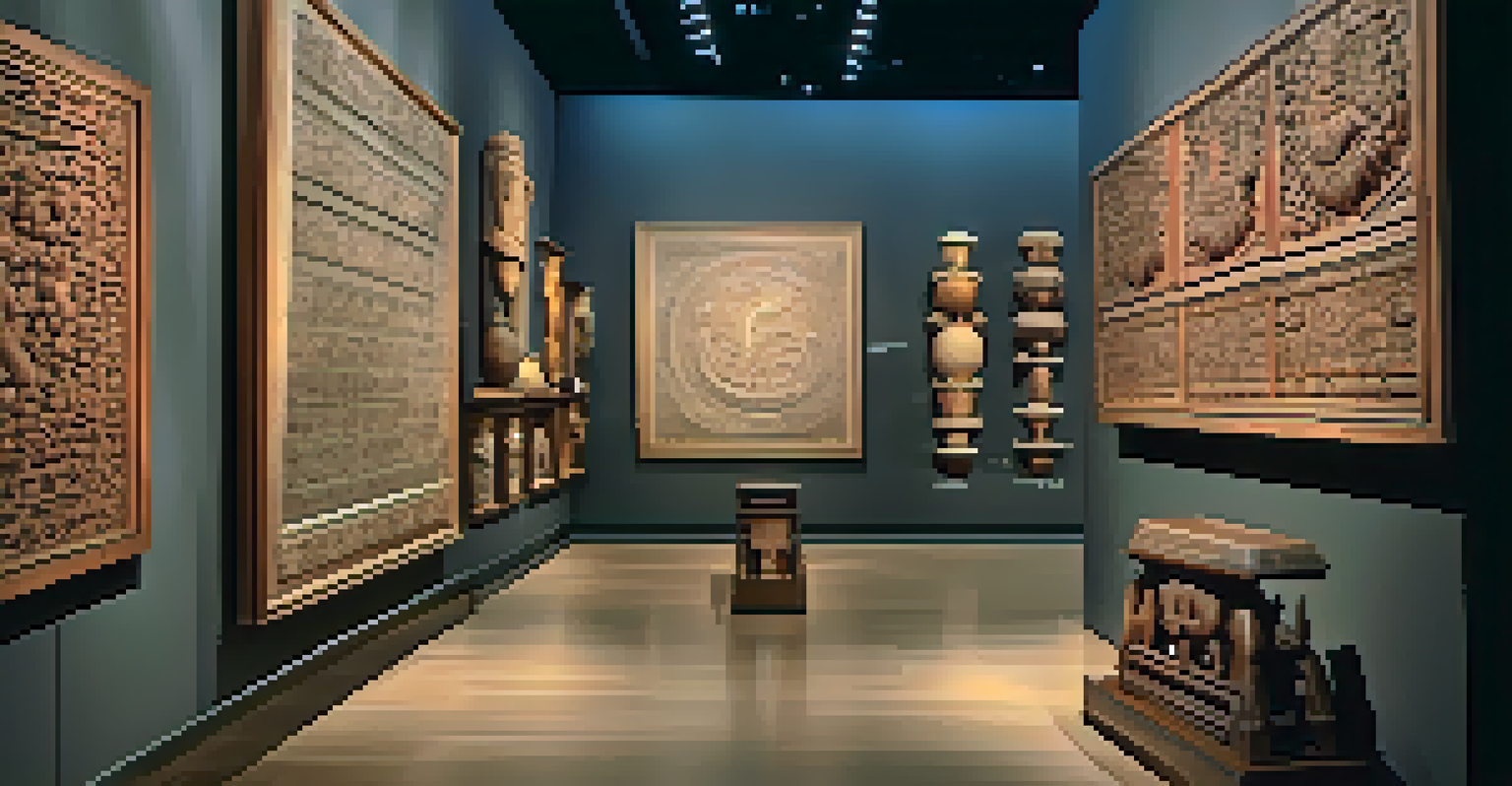Exploring Carving Techniques That Tell Cultural Stories

Understanding the Roots of Carving in Culture
Carving is more than just a craft; it’s a narrative form that tells the stories of a culture's history and beliefs. Each stroke of the chisel can reveal insights into the values, traditions, and identities of different communities. For instance, Native American carvings often reflect their deep connection to nature and spirituality.
Art is the most beautiful of all lies.
Exploring the origins of carving techniques can help us appreciate their significance. In many cultures, these methods have been passed down through generations, often involving rituals that honor ancestors and nature. This historical perspective gives us a lens through which to view the art form as a living dialogue between the past and present.
By understanding the roots of these techniques, we can better appreciate individual pieces of art. Each carving serves as a visual language, communicating messages that resonate deeply within the culture it represents. This connection invites us to engage with the stories behind the art.
Popular Carving Techniques and Their Cultural Significance
Various carving techniques, like relief carving and in-the-round carving, each have unique cultural implications. Relief carving, which creates a raised image from a flat background, is prevalent in cultures like the Egyptians, who used it to depict gods and pharaohs in their temples. This technique emphasizes the importance of the subject matter in the cultural narrative.

In contrast, in-the-round carving creates fully three-dimensional sculptures that can be appreciated from all angles. This method is prominent in African art, where figures often represent ancestral spirits or important cultural figures, embodying the community's values and traditions. These sculptures invite viewers to engage with them in a more personal and immersive way.
Carving as Cultural Storytelling
Carving serves as a narrative form that reflects the history, values, and beliefs of different cultures.
The choice of technique also reflects the materials available to a culture. For example, the Inuit often use stone and bone, while those in tropical regions may carve from wood. Each material carries its own story, contributing to the overall narrative conveyed through the carving.
Symbolism in Carving: A Deeper Look
Symbolism plays a crucial role in carving, turning simple shapes into profound messages. Many cultures use specific symbols that carry significant meanings, such as the spiral representing life cycles or the circle symbolizing unity. These symbols become visual shorthand for complex ideas, allowing artists to communicate layered narratives.
Every artist dips his brush in his own soul, and paints his own nature into his pictures.
For example, in Maori culture, the koru, or spiral shape, represents new beginnings and growth. Carving this symbol into wood or bone not only beautifies the object but also imbues it with meaning, connecting it to the values of the Maori people. Each carving becomes a vessel for cultural identity and continuity.
Through symbolism, carvers can convey messages that resonate beyond language. This universal approach to storytelling makes carving an accessible art form, inviting people from different backgrounds to connect with the narratives expressed through the medium.
Modern Innovations in Traditional Carving Techniques
While traditional carving techniques are steeped in history, modern innovations are reshaping how these stories are told. Artists today are blending age-old methods with contemporary styles, creating pieces that resonate with both tradition and modernity. This evolution opens up new avenues for storytelling, appealing to diverse audiences.
For instance, some carvers are incorporating technology, such as laser cutting and digital design, to enhance their work. This fusion of traditional craftsmanship with modern tools allows for greater precision and creativity, enabling artists to push the boundaries of their craft. The result is a fresh interpretation of cultural narratives that captivates the imagination.
Symbolism Enhances Carving's Meaning
Specific symbols within carvings convey profound messages, allowing artists to communicate complex ideas through visual language.
However, it’s important for modern artists to respect the origins of these techniques. By maintaining a dialogue between the past and the present, they honor the stories embedded in traditional carving while making them relevant for today's world.
The Role of Carving in Cultural Preservation
Carving serves as a vital tool for cultural preservation, helping to keep stories and traditions alive in a rapidly changing world. As globalization spreads, many indigenous practices face the threat of being forgotten. Carving not only preserves these traditions but also fosters a sense of identity and belonging within communities.
Many cultural organizations actively promote carving workshops and festivals, encouraging younger generations to learn these techniques. These initiatives create spaces for storytelling, allowing elders to pass down their knowledge and experiences. This exchange not only enriches the participants but also strengthens community bonds.
Furthermore, showcasing carved works in museums and galleries introduces these cultural narratives to a broader audience. By elevating the art form, we can raise awareness about the importance of preserving these techniques, ensuring that they continue to tell their stories for generations to come.
Carving as a Form of Personal Expression
While carving is deeply rooted in cultural narratives, it also serves as a powerful form of personal expression. Artists often pour their emotions, thoughts, and experiences into their work, using their craft as a means of communication. This personal touch adds another layer of depth to the stories being told.
For example, a carver might create a piece that reflects their journey or struggles, infusing it with elements that speak to their personal story. This blend of cultural and personal narratives creates a rich tapestry that invites viewers to connect on multiple levels. Each carving becomes a dialogue, not just about culture, but about the artist's unique perspective.
Modern Techniques Blend Tradition
Contemporary artists are innovating traditional carving methods, merging them with modern tools to create fresh interpretations of cultural narratives.
This personal aspect of carving highlights the beauty of individual interpretation within a shared cultural framework. It reminds us that while stories may be collective, the way they are expressed can vary significantly, enriching the overall narrative landscape.
Connecting with Carving: A Call to Action
As we explore the world of carving, it’s essential to engage with this art form actively. Whether you’re an aspiring artist or an admirer, there are numerous ways to connect with carving techniques. Taking a workshop or visiting local galleries can deepen your understanding and appreciation of the cultural stories they convey.
Additionally, supporting local artisans and cultural initiatives can help preserve these invaluable traditions. By purchasing handcrafted pieces or participating in community events, you contribute to the sustainability of carving practices. This support not only benefits the artists but also enriches the cultural fabric of your community.

Finally, sharing your experiences and learnings about carving with others can spark interest and dialogue. The more we discuss and celebrate this art form, the stronger the collective effort to preserve and honor the cultural stories that carving communicates.